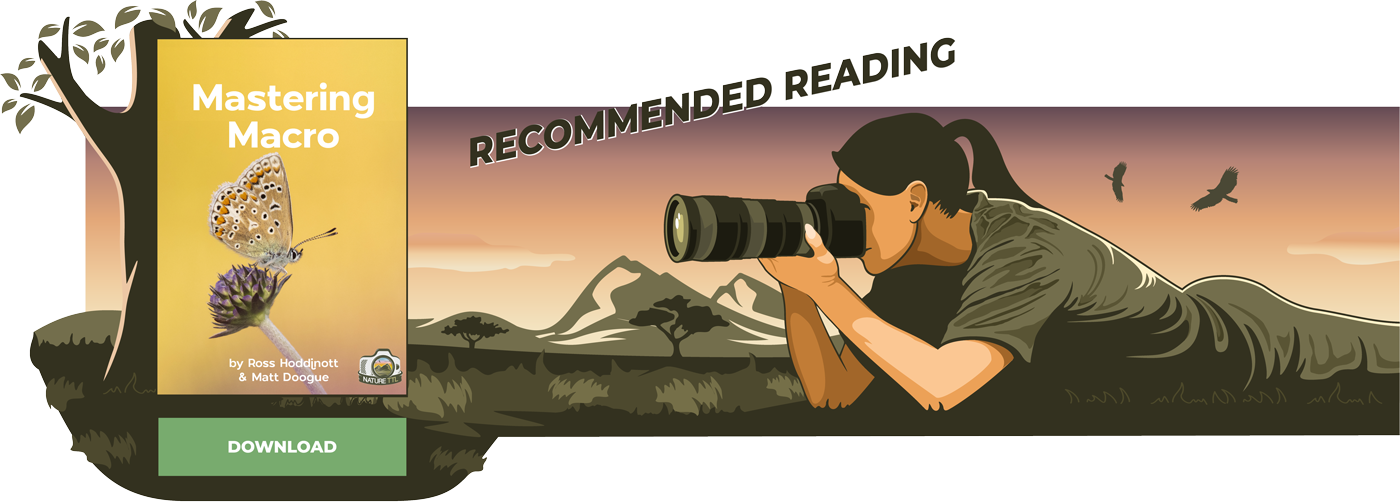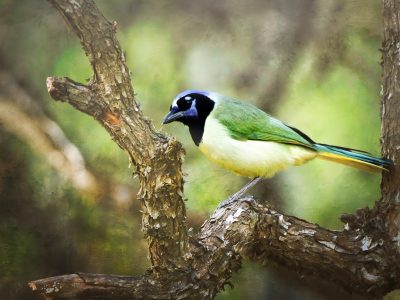How to Improve Your Butterfly Photography

While insect photography may not appeal to all nature photography, surely few can resist a butterfly. They are colourful, graceful, charming insects, and a metaphor for transformation, change, and renewal.
As pollinators, butterflies play an integral environmental role – they help with pest control and provide an important food source for larger creatures. Butterflies are a highly sensitive indicator of the state of our environment, though, and are sadly declining at an alarming rate.



Whether you are new to insect photography or an experienced close-up photographer, my aim is to help you achieve better butterfly photographs and to build on my previous article, Butterfly Photography – How to Photograph Butterflies.
In this article we will be looking at approach, lighting, composition, and how you can attract butterflies to your own garden space.
Read more: Butterfly Photography – How to Photograph Butterflies
Accessible subjects
You can find butterflies almost anywhere during spring, summer, and early autumn. They inhabit almost every habitat, with different species adapted to different environments.
However, wildflower meadows, heathland, grassy chalkland, woodland glades, and flower-rich gardens are among the best habitats to visit with your camera.

On warm, sunny days, butterflies should be obvious – flitting between flowers, busily feeding, or basking in the sunshine. However, while they are easier to locate during the heat of the day, their heightened activity typically makes them trickier to approach and photograph.
When stalking nectaring butterflies, a tele-zoom (in the region of 100-400mm) with a short minimum focusing distance can prove more effective than using a dedicated macro, as it provides a larger camera-to-subject distance and thus minimises the risk of disturbance.
However, a macro lens (upwards of 100mm) is usually the best option for butterfly photography.
Read more: The Best Habitats for Macro and Insect Photography
Be selective
Don’t just try to photograph any butterfly you see. It is important to be thoughtful and selective. Wait for subjects to land somewhere where you can place distance between them and their background. This will allow you to achieve a clean, diffused backdrop that will help your subject stand out.
Quite simply, don’t ever underestimate the importance of background colour and quality – it will make or break your shot. I always work extremely hard to capture attractive bokeh (the aesthetic quality of the blurred, out-of-focus parts of an image).

As you approach your subject, think about which camera angle and perspective will provide the best backdrop and result, and align yourself accordingly. If the background is messy and distracting, walk away and wait for another opportunity.
Rather than blindly ‘chase’ subjects, a better approach can be to identify a flower in a good position – isolated and with a clean, colourful background – and then patiently wait nearby for butterflies to visit.
Read more: How to Use Negative Space in Macro Photography
Image sharpness
Depth of field is extremely limited when shooting with longer lenses and at higher magnifications, so camera positioning is important when photographing insects like butterflies.
To place as much of your subject as possible within the plane of focus (thus maximising the depth of field available to you at any given aperture), try to always keep your camera parallel to the subject.

Autofocus is often the best option when stalking butterflies. Although AF has a reputation for struggling to lock onto macro subjects (due to the lack of light and reduced contrast), modern systems are much improved.
For relatively static subjects, a single AF point is often the best choice – simply position the AF point on your chosen point of focus (typically the subject’s eyes).
However, with cameras providing a wide choice of AF modes suited to different conditions/subjects, it is worth experimenting to discover which is most reliable. For example, eye-detection AF is now becoming more reliable and can work successfully with some macro subjects.
For moving subjects, predictive and tracking modes can be useful. Ultimately, your setup will vary depending on your camera model, subject, and situation.

Don’t be afraid to play the numbers game and take a short burst of shots to increase your chances of achieving a pin-sharp result – particularly when subjects are active or windblown.
Speed is also important when shooting handheld and at magnification – even the tiniest movement appears exaggerated. Either manually increase ISO, or switch to AUTO-ISO to (ideally) generate a shutter speed above 1/250 sec.
I typically use an ISO upwards of 1000 when shooting insects – high ISO performance is so good now that file quality is barely affected.
Read more: How to Focus Stack Macro Photos in the Field
Tips on composition
Simplicity is often key to capturing successful butterfly shots. Try to keep backgrounds clean, diffused, and free of distractions. Placing your subject on a dividing third – as per the rule of thirds – will help you achieve more interesting and stimulating compositions.
Don’t assume that filling the frame with your subject will always produce the best result. Tightly framed portraits might have an immediate impact, but they are rarely stimulating and convey little about the subject or its environment.

Negative space will help provide your subject with ‘breathing space’, context, and convey a sense of size and scale. Results tend to be more aesthetically pleasing and engaging.
Consider using nearby foliage and flowers to frame your subject. By selecting a large aperture in the region of f/4 or f/5.6, you will generate a depth of field shallow enough to throw foreground and background vegetation attractively out of focus.
These areas of blur and splodges of colour will act as a frame and direct the viewer’s eye more efficiently to the subject.
Don’t always wait for butterflies to bask with their wings open flat before taking photos
A butterfly’s underwings are often beautifully marked, so while it is resting or roosting, capture a side-on view to highlight its profile and wing detail. A head-on view can produce quirky portraits of the insect’s extraordinary eyes and antennae.

If you wish to produce standout results, explore different shooting angles and viewpoints. And if you want to capture a more environmental style close-up, take a step or two back, or switch to a shorter focal length.
Select a smaller aperture – in the region of f/11 – to produce a larger zone of focus and create results that place the subject neatly within its habitat.
Read more: How to Use Foregrounds & Backgrounds in Macro Photography
Time of day
Flighty butterflies obviously provide photographers with little choice over light and background. If you crave more control, it is best to seek roosting subjects, which are less active and more likely to stay still while you take photographs.
A good understanding of your subject and multiple visits to local habitats will help you locate roosting butterflies.

Visit local reserves and meadows regularly and watch where butterflies settle for the night. Some species, like blues and marbled whites, are quite social roosters and can often be found roosting near one another – sometimes even sharing the same flower or grass head.
It is best to search for settling butterflies on calm, warm evenings when they are most obvious, clinging to tall grasses or on top of flowers. In damp, blowy weather, they are more likely to disappear into thicker vegetation or hunker down closer to the ground.
If you decide to set your alarm early and look for dew-covered insects at daybreak, stick to footpaths and be careful where you tread – butterflies will be torpid in cold conditions and unable to escape careless feet.
Photographing roosting subjects
The key advantage to finding and photographing roosting subjects is that you can secure your camera to a tripod.
This enables you to focus more precisely – for example, you can switch to manual focus and use focusing aids such as focus peaking and the magnify button to enlarge your point of focus for ultimate precision.
With your camera fixed, you have time to refine and perfect composition and properly allow your eye to explore the background for distractions. These can then be removed by altering the camera position, or gently bending or removing grasses or messy vegetation out of the frame.

With your subject stationary, you can also manipulate the light. When photographing small subjects like butterflies, it is possible to use lighting aids, such as reflectors or diffusers, to alter the light’s quality or relieve ugly shadow areas on underwings or flower stems.
Better still, you can position a small LED device close by to illuminate your subject creatively. LEDs suit my style of close-up photography more than using flash. I currently use a small device made by Smallrig, which allows me to quickly alter the light’s colour and intensity for creative effect.
I either attach the light to a tripod or Plamp, or handhold it in place. Backlighting is particularly well-suited to butterfly photography – highlighting the translucency of the insect’s wings and their shape, design, and colour.

While artificial light will never match the quality of warm, natural low light, an LED is a useful lighting accessory when shooting inactive insects.
Roosting, stationary subjects also present better opportunities for stacking to artificially extend depth of field. While this is not something I personally choose to do very often, it is a good technique for overcoming the limited depth of field associated with close-up and macro photography.
Gardening for wildlife
As I mentioned previously, butterflies are in steep, worrying decline. Nature photographers can help butterflies and enhance their photo opportunities by creating their own wildlife area. ‘No mow May’, for example, has helped highlight the importance of garden habitats and natural corridors.
A great starting point is to allow an area of your garden to grow wild and plant native wildflowers.
Oxeye daisy, bird’s-foot trefoil, field scabious, common sorrel, field forget-me-not, ragged robin, and common knapweed are among the nectar-rich plants that butterflies, bees, and other pollinators adore.

While the flowers provide nectar, the leaves give shelter and food for larvae and other insects. Even a small space will be big enough to attract wildlife.
You can buy native wildflower seed mixes and bee bombs online relatively cheaply. Fruit trees will also attract butterflies – insects love feeding on the blossom in spring and windfall fruit in autumn.
Having a wild patch will not only benefit nature and your photography but almost certainly boost your mental health too.
Ethics
Ethics in insect photography is not discussed enough. There are too many photographers who believe it is acceptable to handle butterflies and move them into unnatural or unrealistic settings. Worse still, some catch, refrigerate, or spray insects to make them easier to photograph.

Breeding butterflies solely for photography is not ethical either. Standout butterfly images should always be captured in situ, naturally, and ethically. Unless you are an experienced entomologist, do not handle or move insects.
Always be considerate and sensitive to both the subject and its habitat. The subject’s wellbeing is more important than your photograph.
In conclusion
Butterflies are a highlight of spring and summer – exquisitely beautiful subjects that are irresistible to photograph.
Join your local Wildlife Trust or Butterfly Conservation to learn more about butterflies, their fascinating life cycle, where to see them, and how to help protect them.





